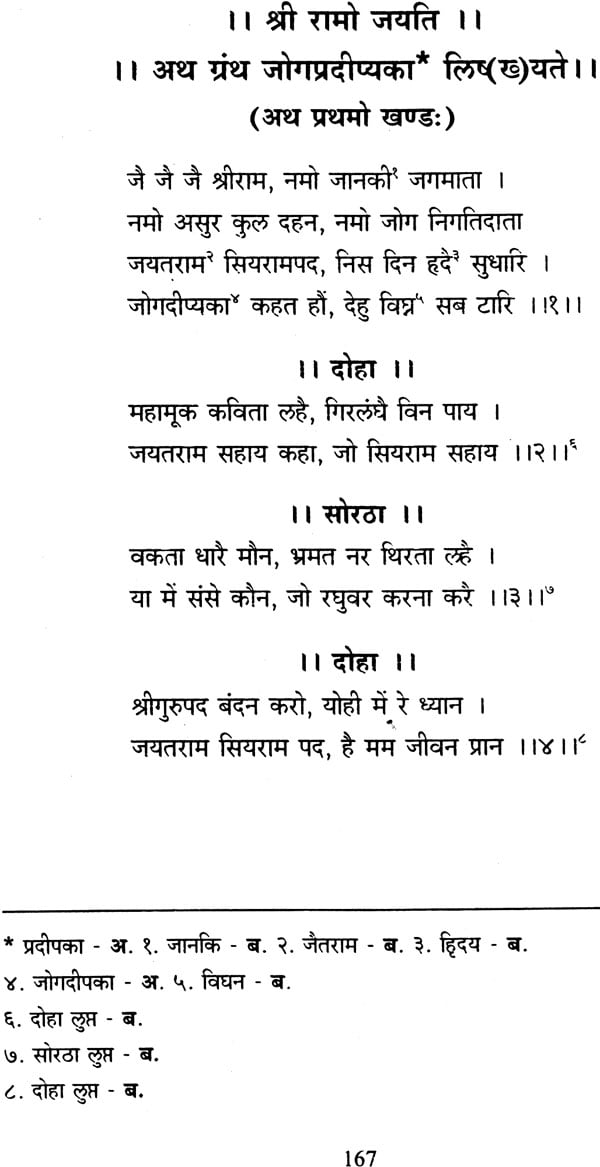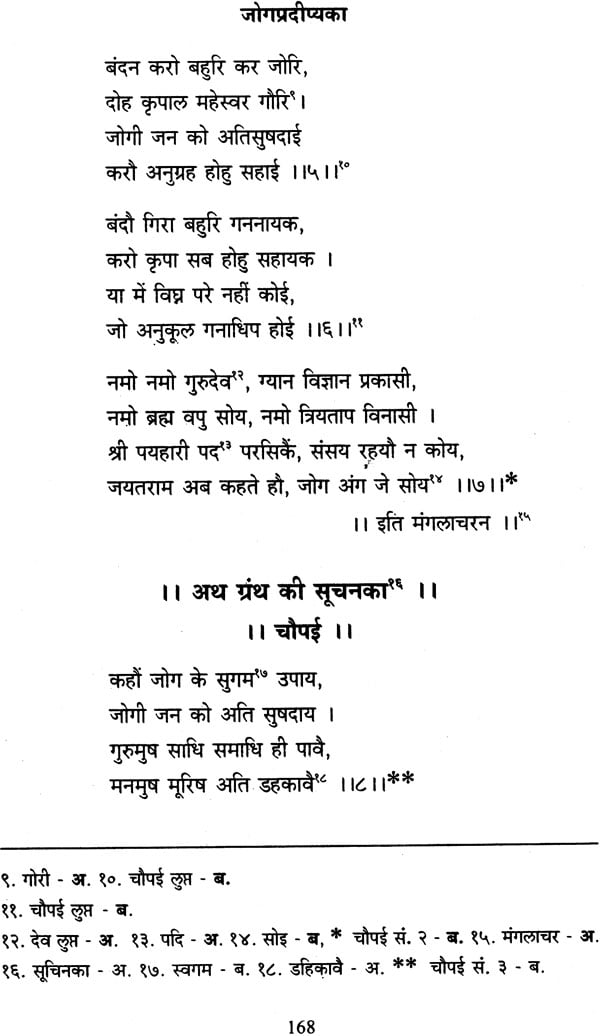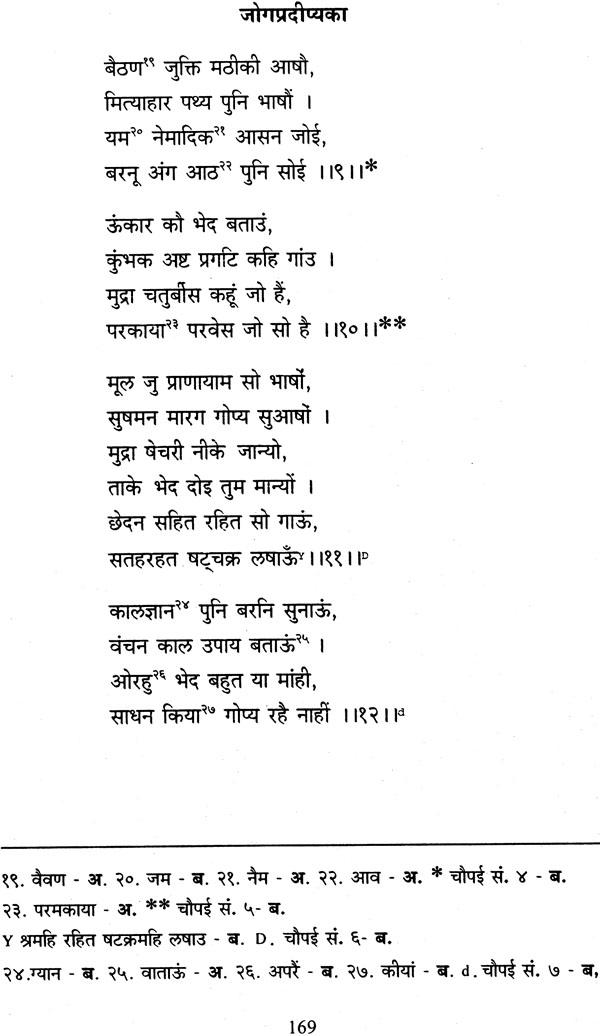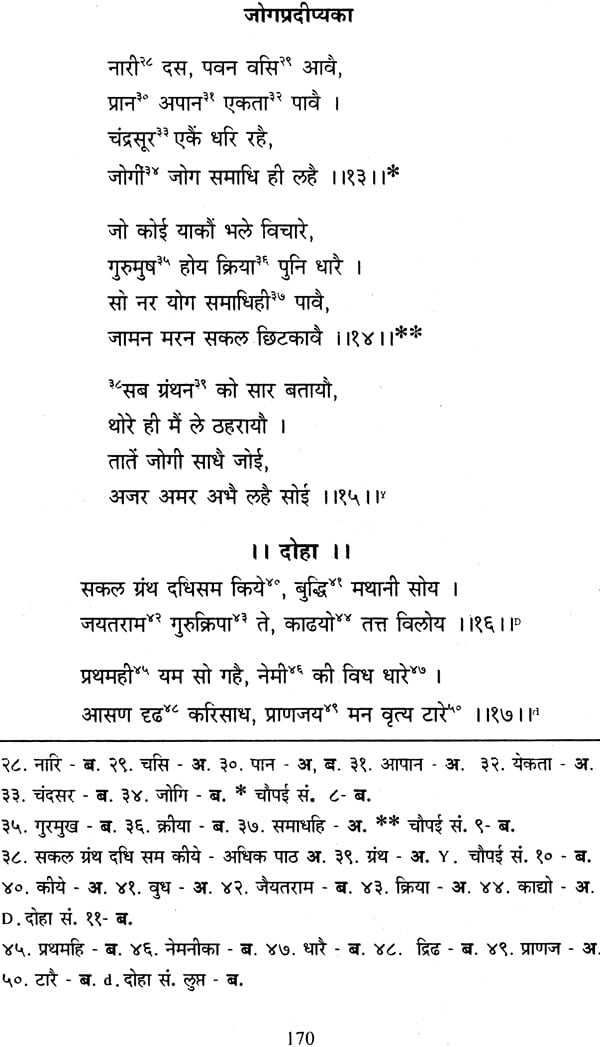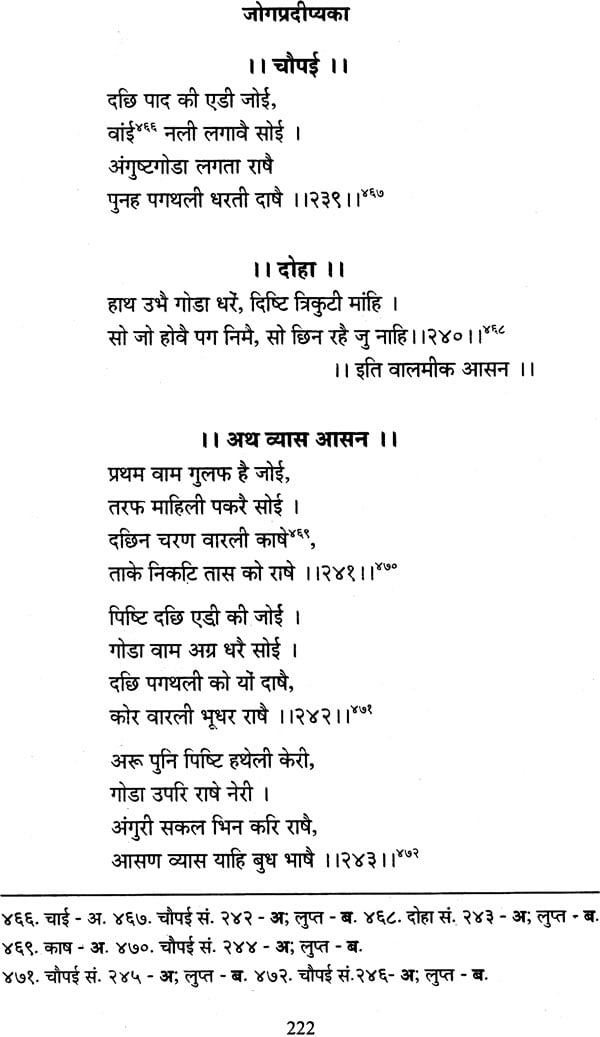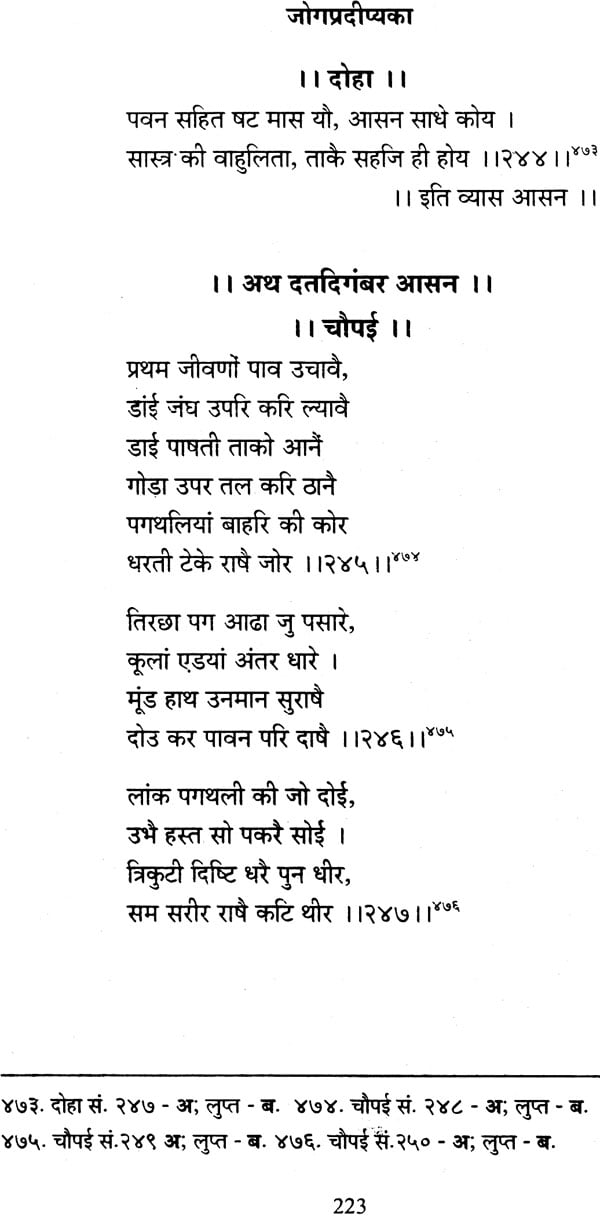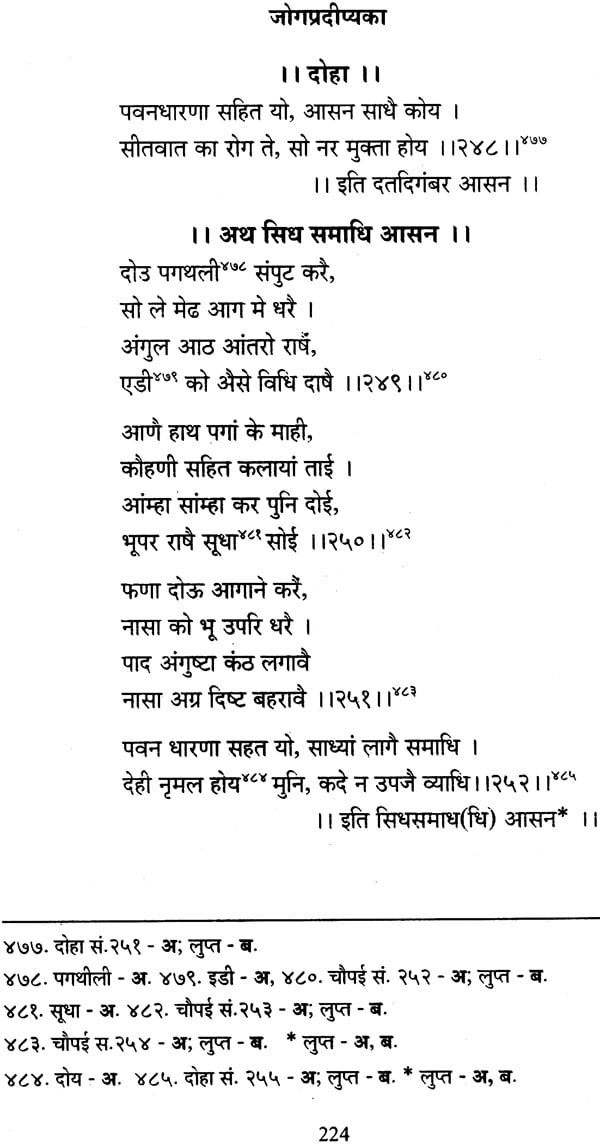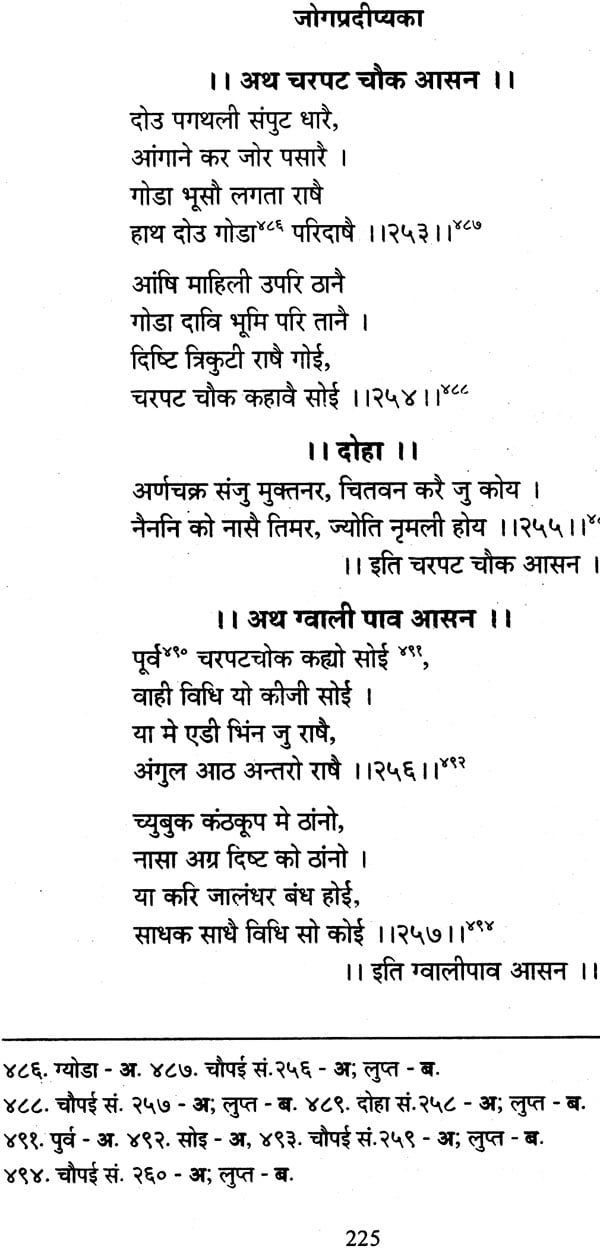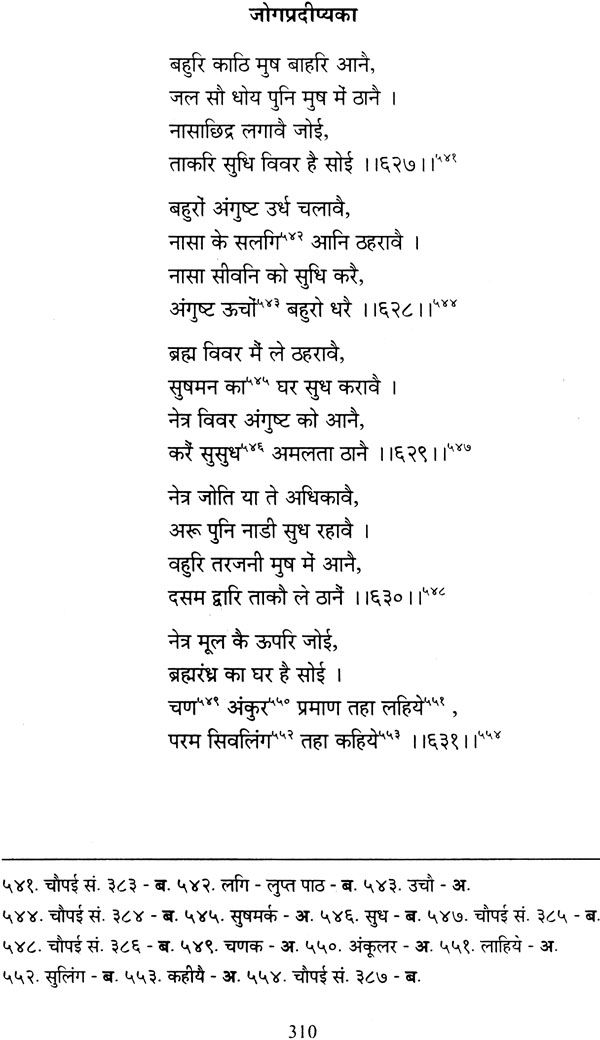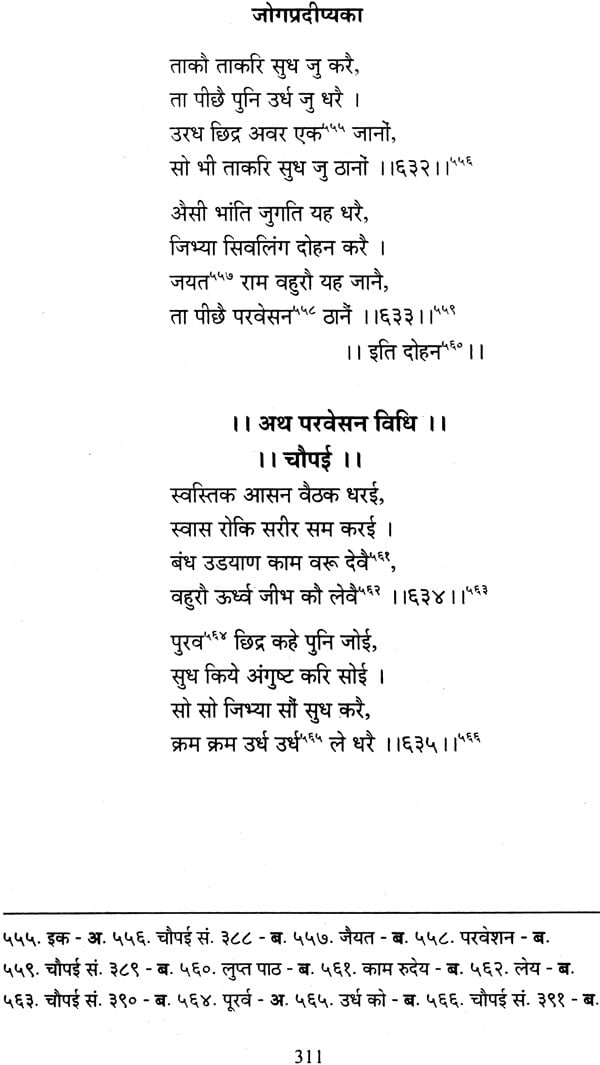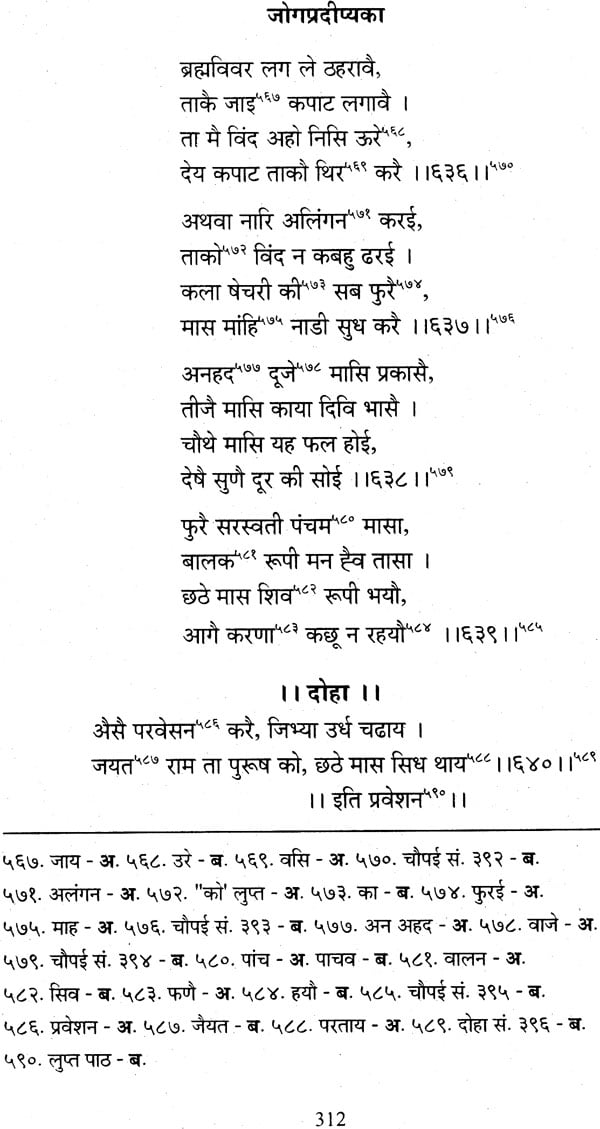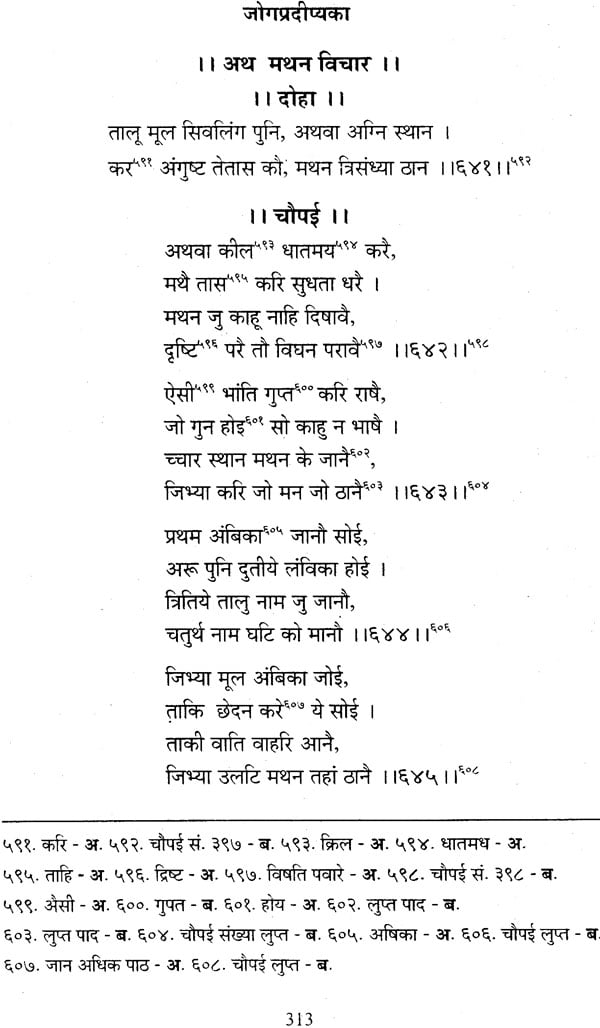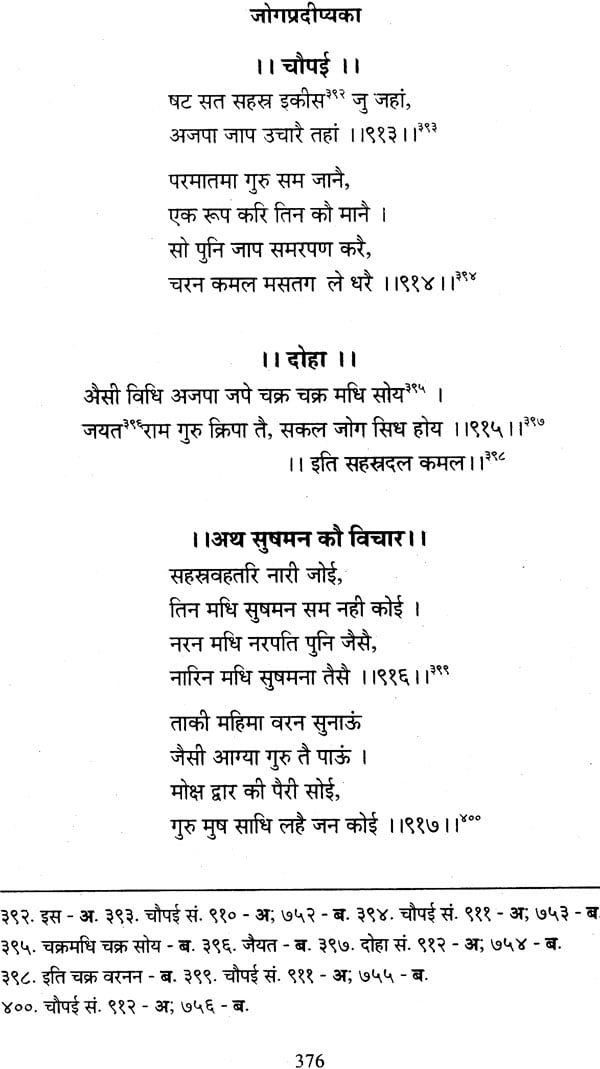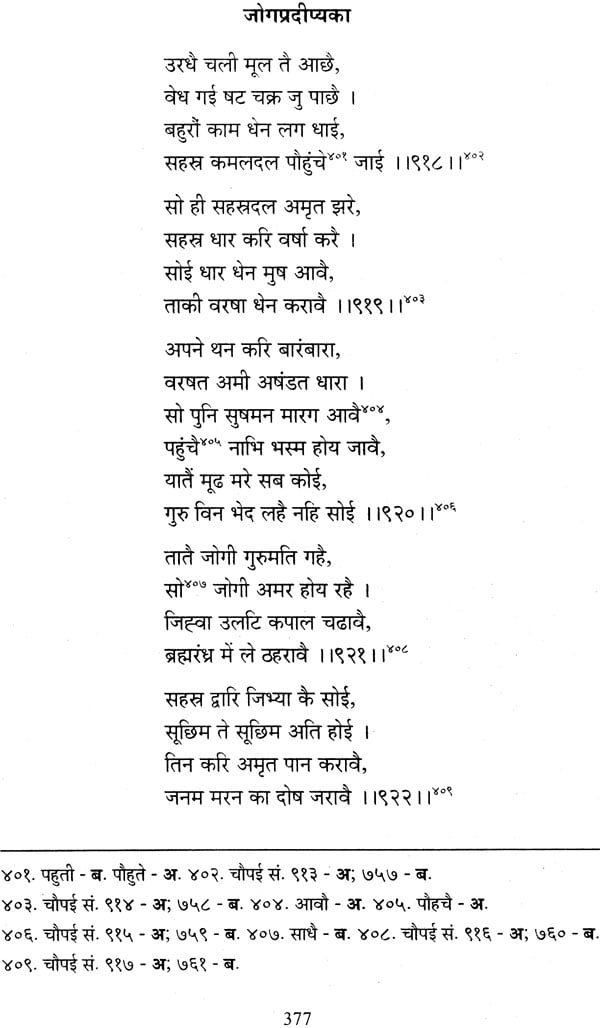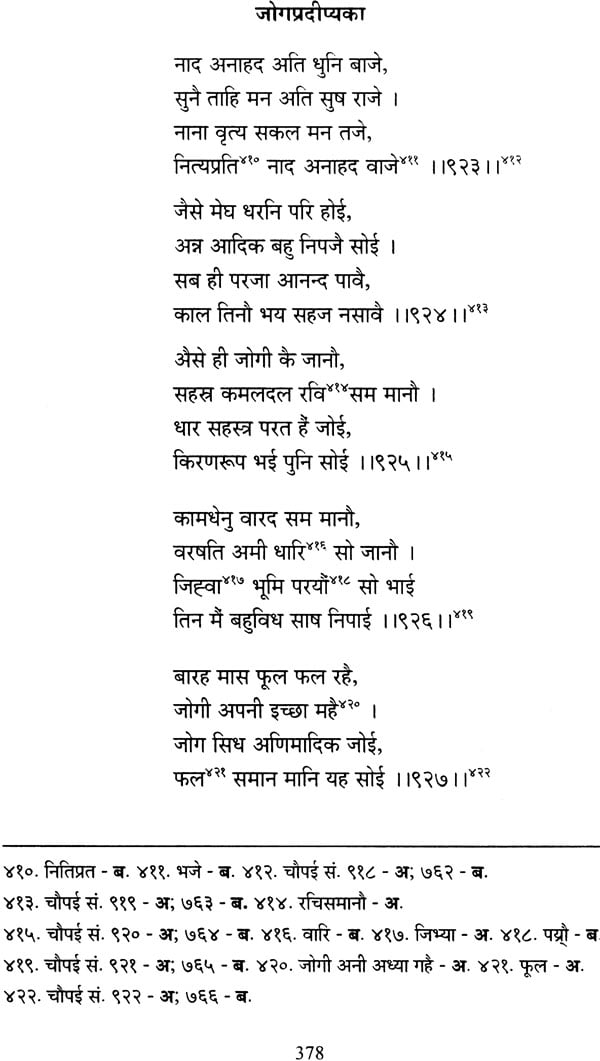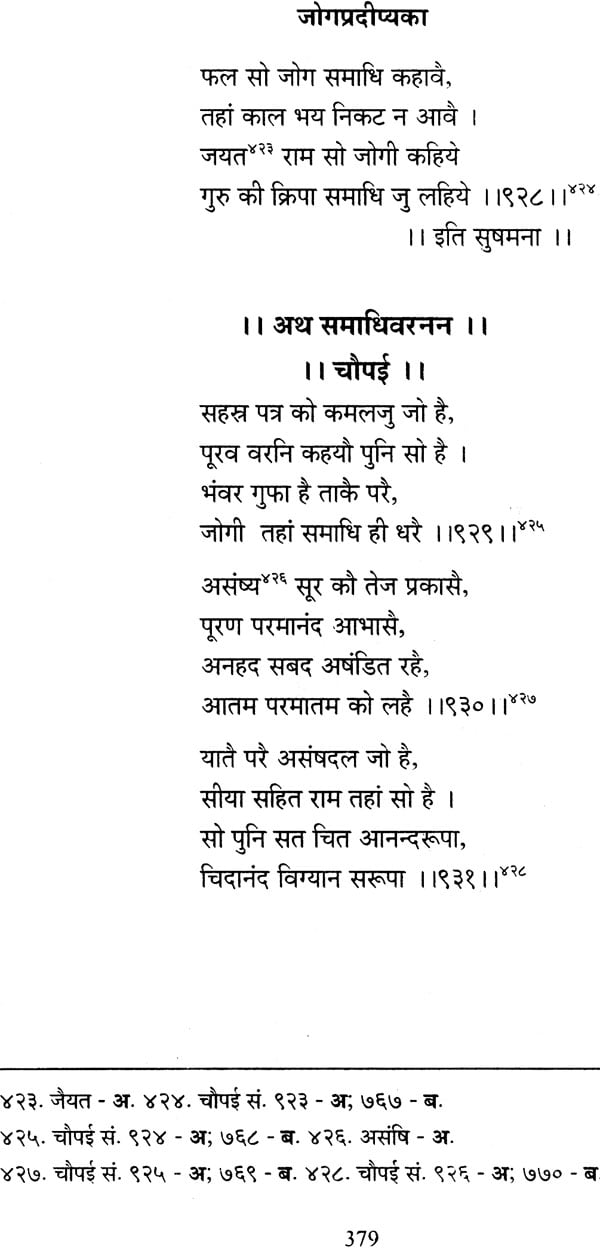
Jogapradipyaka of Jayatarama
Book Specification
| Item Code: | NAH029 |
| Author: | Swami Mahesananda |
| Publisher: | Kaivalyadhama Samiti Lonavla |
| Language: | Hindi and English |
| Edition: | 2006 |
| ISBN: | 8189485458 |
| Pages: | 382 |
| Cover: | Paperback |
| Other Details | 8.5 inch X 5.5 inch |
| Weight | 410 gm |
Book Description
It is a matter of satisfaction that our Philosophico-Literary Research Department is, slowly and steadly, widening the horizons of yogic knowledge by adding one more Critical Edition to its credit. The work of editing critically the Text on Yoga in Hindi dialect was taken up by the Department for the first Time. The Manuscript (Ms.) attracted the attention of our Researchers because of its rich content full of valuable informations from the view point of practice and application both. Many are the hurdles in the path of any initiative. In fact, the plan and project was visualized and initiated many years ago with the help of two Mss (i.e.) of this text “Jogapradipyaka”. Thus fulfilling the minimum requirement of preparing Critical Edition. As many folios from Ms. ba were found missing the Department was in the search of at least one more Ms. in order to provide the authentic version of the text and its cross verification. Even after years of correspondence and search the Department could not get any more Ms.. This not only delayed the materialization of the project but also compelled our researchers to accept the Readings of the Ms. as vulgate one and made them to think it proper to present the differences in a and ba Mss only in the form of foot notes while accepting the reading that seemed nearest and most appropriate on yogic commonsense.
The exhaustive introduction to this Edition serves not only as the English rendering of the original Text but also as a rich source of information that highlights the similarities and differences, wherever possible, of present work with several other renowned yogic texts. Thus we hope that the work will be proved as a rich and authentic source material for all those who approach yoga from application point of view.
Research activity is a result of several forms of contriboutory factors. And we wish to place on record our valuable appreciation to all those persons, institutions etc. who have provided help in various forms towards the preparation of this critical edition. We are thankful to Nagari Pracarini Sabha, Varanasi for the Ms. a and to Bhandarkar Oriental Institute, Pune for Ms. B. Indeed any researcher would like to remain ever indebted to these Institutes for their yoman services they are rendering in the field of indological research. Thanks are due to them also who have taken pains to respond to our correspondence in seeking more Mss.
Shri O.P. Tiwai, to whom we remain ever indebted for his contribution and concern for the Department and Institute as a whole as he always remains in search of new information related to Yoga manuscripts and it will be pertinent to mention here the fact that he was instrumental in procuring the Ms. a of this text.
The work is being released on the occasion of Vth International Conference: Advances in Yoga Research, Education and Therapy 28-31 December 2006. Shri Subodh Tiwari, Organizing Secretary, because of whose sheet anchor role in Kaivalyadhama activities in general and release of this work in the conference in particular, deserves our appreciation and congratulation.
The work of critically editing a manuscript is not a simple task. The Philosophico-Literary Research Department as a whole deserves, as ever, our thanks and thus Dr. B. R. Sharma, Assistant Director of Research, Shri G.S. Sahay, and Shri R. K. Bodhe, Research Officers are to be specially thanked for their efforts in this regard.
Besides English Typing the present Text consists of computer works of various kinds such as Transliteration, Devanagari Script Typing, feeding of variant readings in the form of foot notes in different fonts etc.. All this requires refined skill and attention and Shri P.H. Raut, who prepared the type script deserves our thanks for the same.
Mr. Tanpure Proprietor, Ace Enterprises, Pune, who has long standing experience in printing and long association with Kaivalyadhama, has utilized his expertise unsparingly towards welknit printing of the present work and hence our thanks are due to him.
The research work of present kind requires reference sources from Library at several stages. And this has been promptly provided by Library staff Mr. B.D. Kute and Mrs. A.S. Sinha for which they deserve our appreciation.
We express our sincere gratitudes towards all the members of Kaivalyadhama Pariwar for there direct/indirect contribution towards this work.
Last but not least, we appeal to our readers to give their feedback, comments, criticisms etc. regarding the present work so that they can be incorporated in the future. We also place here our request for the information of any new Ms. of this Text. It will be duly acknowledged by us in the next edition of this text.
The work of editing “Jogapradipyaka” (J.P.) –a yogic treatise in Hindi dialect –critically was taken up long back in the year 1991. The selection of this text was based on following important points:
1. Hathayoga practices are available in various original yogic texts namenly Hathapradipika, Gheranda Samhita etc. wherein Hathapradipika does not talk about Mantra application in any of its practices. In Gheranda Samhita we do find the application of Mantras in the description of Sagarbha Pranayama only. However, Jogapradipyaka describes the application of Mantra not only in other practices but even during the practice of Asana also.
2. It is well known in yogic literature or even in astrological calculations of the time that every normal healthy person breaths 21600 times in a day (i.e. 24 hrs) at the rate of 15 respirations per minute. But their relationship with energy centers (cakras) was not a popular notion. Jayatarama, by associating certain number of respiration with a particular cakra has indicated some special relationship between cakras and respiration and thereby with Pranayama.
3. There are many texts on Yoga who claim the number of Asanas to be 84 lac but while describing they describe only a few asanas e.g. Hathapradipika describes 15 asanas only, Gheranda Samhita describes 32 asanas, Goraksa Sataka describes only two asanas and so on.. However, Jayatarama has described a total number of 84 asanas along with their therapeutic properties, which provides it a unique and special status in yogic literature.
These were certain factors, which attracted the attention of editors towards this text. It was decided to bring out its critical edition with the help of maximum manuscripts. We could procure two manuscripts of this text –one from B.O.R.I. and other from Nagaripracarini Sabha. As per the demand of the norms of preparing critical edition of any text, a minimum of two manuscripts of that particular text is required. We had already two Mss with us. The work could have been started with the available two Mss only but we wanted to procure at least one more manuscript to help us in deciding correct reading and cross verification because many pages were found missing in Manuscript (i.e. Bhandarkar Oriental Institute, Pune.) but available in other one (i.e. Nagari Pracarini Sabha, Varanasi. It was the greatest problem before us. Even in Descriptive Catalogue of Yoga Manuscripts (Updated) published by Kaivalyadhama, 2005, we could find information about two manuscripts only which we had already procured (See, Entry No. 177, 178, Page No. 94). Still, we did not leave the hope and started corresponding with different Libraries in India enquiring about its availability in their libraries. Our efforts went in vain as most of the libraries paid no heed to our letter and those who responded answered negatively. It not only delayed the process of work on it but also we had to drop the idea of procuring one more manuscript. We thought it proper to present exhaustively the differences in these two manuscripts in the form of footnotes and we have accepted those readings, which seemed to be nearest and most appropriate. We do not claim that the readings accepted by us are the only correct reading because of our limited knowledge about the dialect in which the text is written. However, we feel that our efforts were honest and we reached to the nearest and blemishless reading of the verses.
